What? Course work performed as part of the MFA in Transdisciplinary Design program at Parsons School of Design/The New School in New York City.
My role: Student
“Design-Led Research” was taught during my first semester at Parsons in NYC, as an introduction to the methods and “specific expertise that designers bring to transdisciplinary collaborations.”
From the syllabus: “The course concerns ways that the act of design informs understanding and it highlights how this dynamic takes form as the process of inquiry unfolds. (…) They are asked to reconcile the need for rigorous, empirical science with the speculation that drives all design and, critically, they are asked to do so in the context of a practice that can be used to pose questions and provide responses on multiple levels of analysis.”
See below for examples of the collaborative projects performed as part of our class work.
Wrapping up my first semester of Design-led research, we were asked to deliver a toolkit to summarize our insights and experiences of the class. I chose to deliver mine as a massive marker mural – positioning Design-led research on a scale between (or, ideally, all-encompassing) the research traditions of Science and Art.
View a larger version of the mural here.
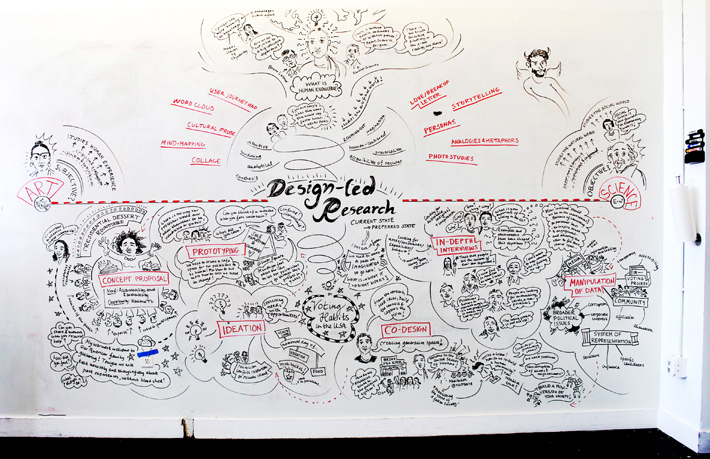
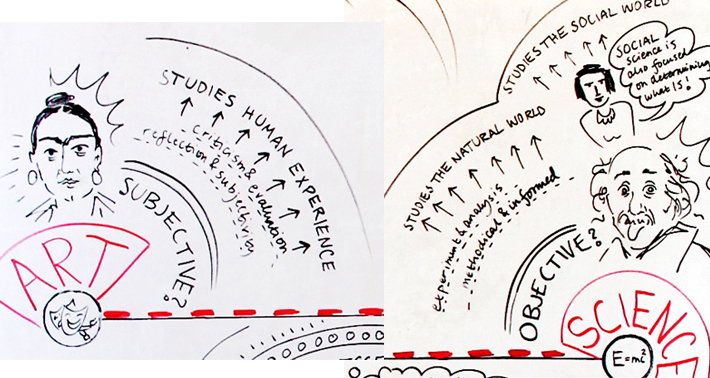
I personally find the tension between the so called “subjectivity” of art – focused on human experience – and the “objectivity” of science – focused on the natural and social worlds – extremely interesting and productive. On a more fundamental philosophical level, I believe the absolute distinction is inaccurate, and merely different “lenses” we have access to as human beings to describe our relationship to the world around us.
Going back to Design-led research, it is said to study the “artifical” or “man-made world” – which, as I see it, is really the meeting point between us and humans and the world around us which is pretty much all we have access to anyway in terms of knowledge. Design-led research therefore is less interested in trying to establish “truths”, more interested in understanding how change can be achieved, what works, and how we can balance the tension between analytical/intuitive skills to move from a current state to a preferred state.
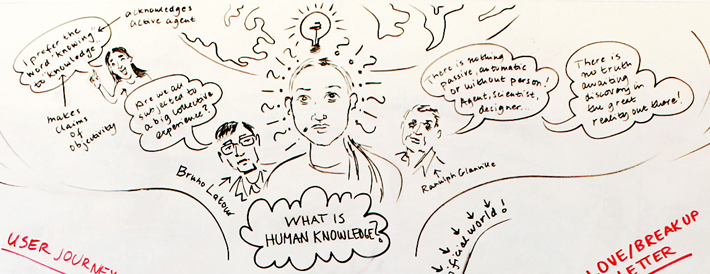
It draws from methods from the social sciences as well as user-centered research in design, and is a field is at the beginning stages of its formations in terms of its application outside the commercial or product-centered arena. Some of these methods are listen in the graphic below.

Save
At the heart of design-led research is the in-depth interview, used with the primary purpose of gaining “actionable insights”, or inspiration that can lead to interesting concepts that can be tested and reiterated in the form of prototypes.
During the semester, we conducted a number of interviews with people we approached in public spaces in New York, centered around voting behavior, and the fact that voter turnout in the US is less than 50%.
Download our question guide here.
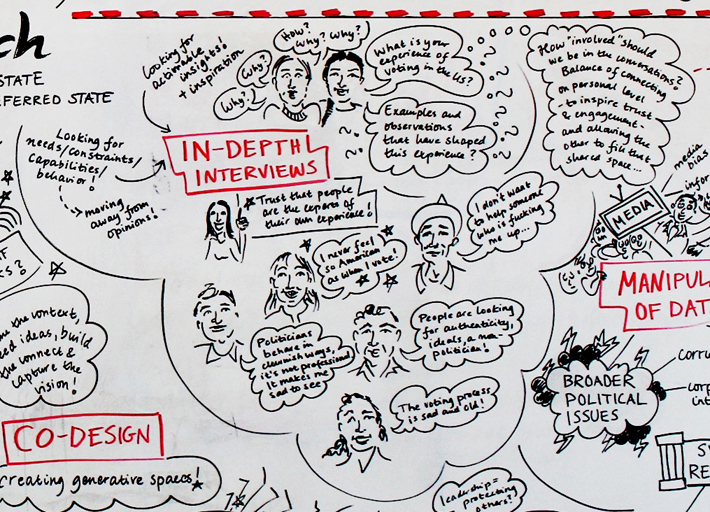
In the next phase, we manipulated the data we gathered into “areas of possible intervention”, including media, voting process, sense of community and system of representation.
Download our Research on Voting Habits here.
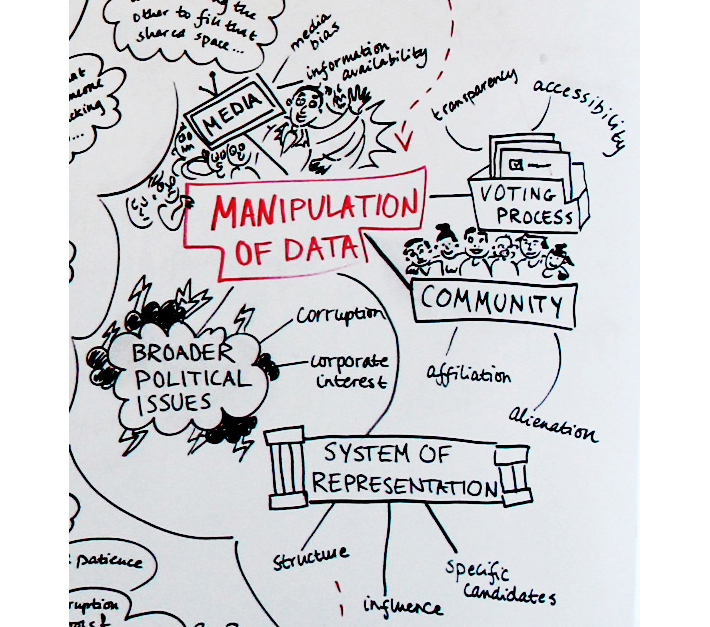
We then moved on to conduct co-design sessions. My team visited a high school in Bronx, where we used storytelling/meditation and the imaginary concept of “United States of Nowhere” – establishing a scene of a fallen city and a fallen society with no corporations, no government, no media, no money, no police, no law and no order – to spark a making session and a discussion on how to establish trust in the political system.
Download our Co-design presentation here.
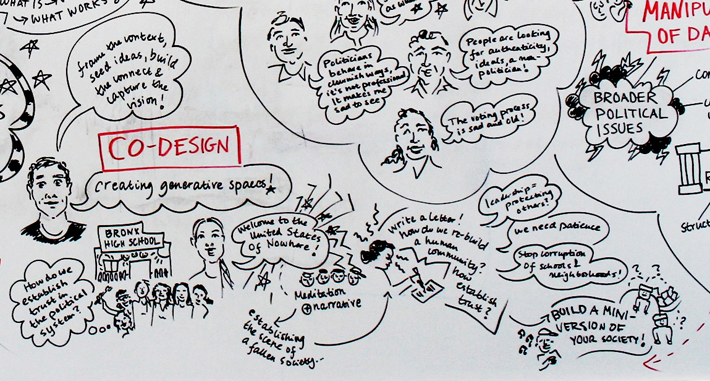
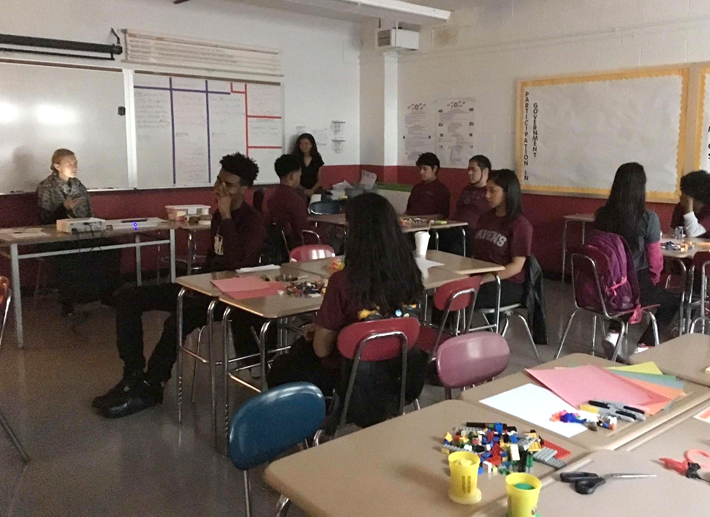
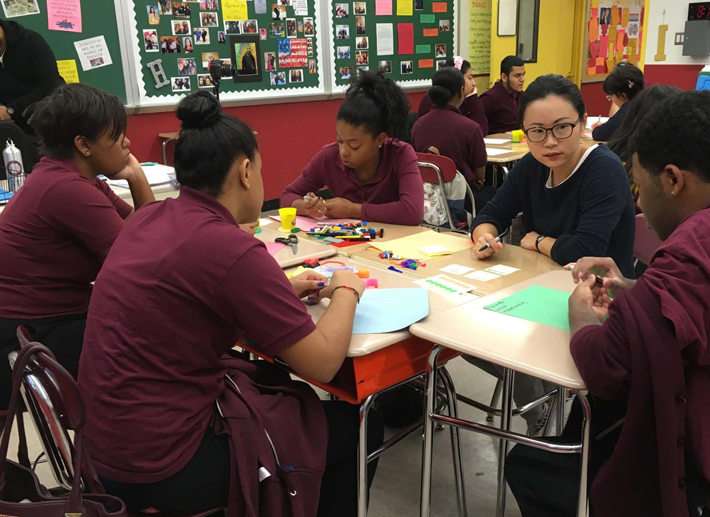
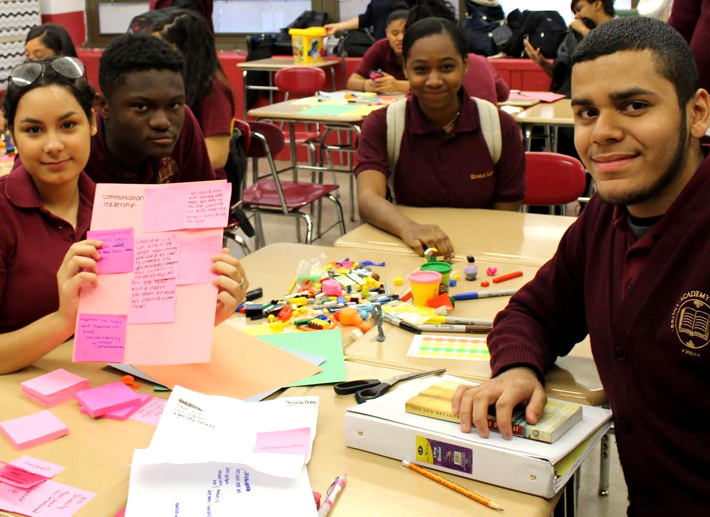

Following our co-design session, we moved on to ideation, connecting identified needs with opportunities in 20 concepts.
Have a look at all of our concepts in my fellow Trand D student Javi´s process book (p.22-32) here.
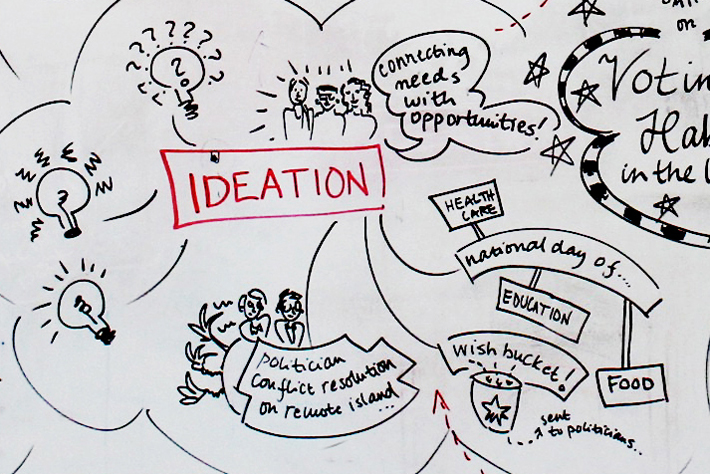
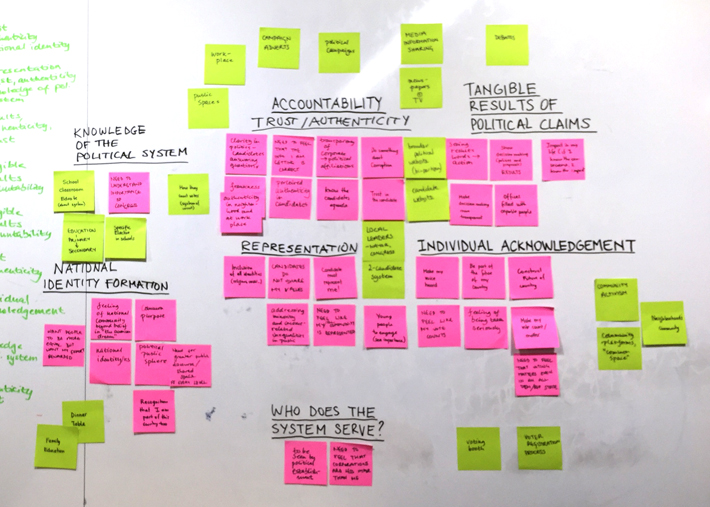
Out of these concepts we then chose two to prototype. My favorite one was “Self reflection and chocolate” – a prototype based on a public media format where the presidential candidates are given the opportunity to exercise human frailties and vulnerabilities through questions around previous mistakes and strategies for handling uncertain and complex situations.
For our prototype, we staged a setting at Union Square where passers by were given the chance to reflect on the same questions we would use in the debate format. We then asked their opinions of this format being used in national
debates.
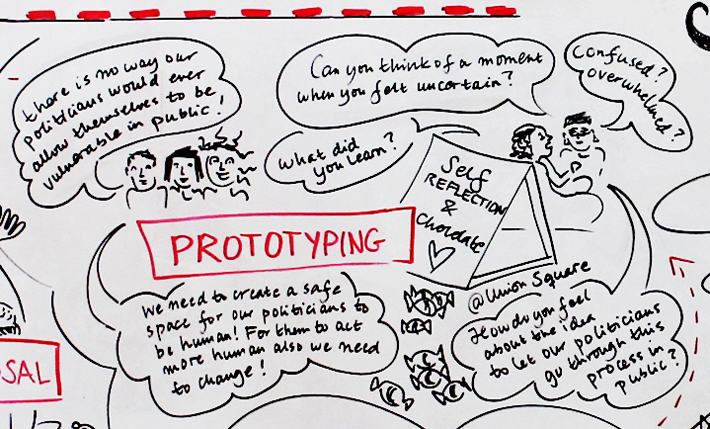
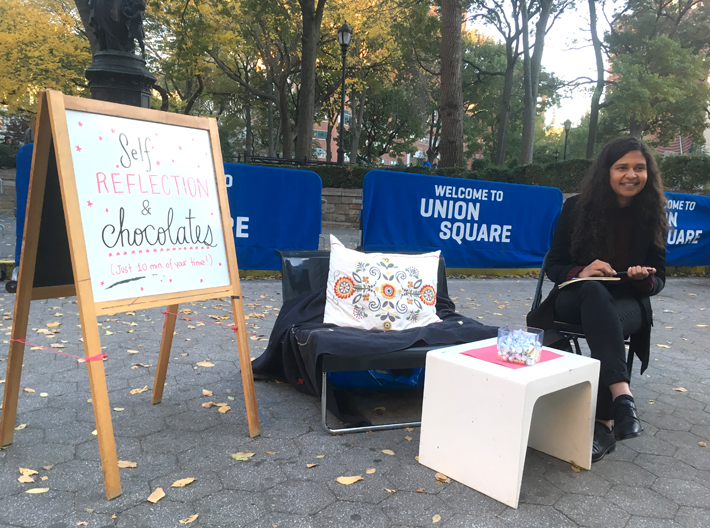
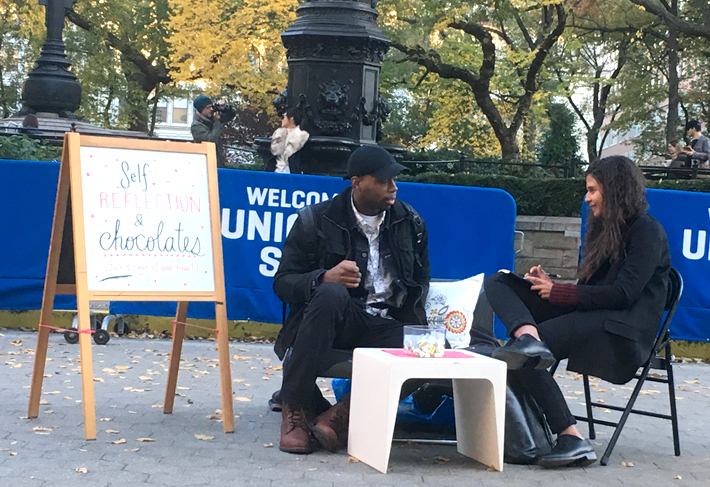
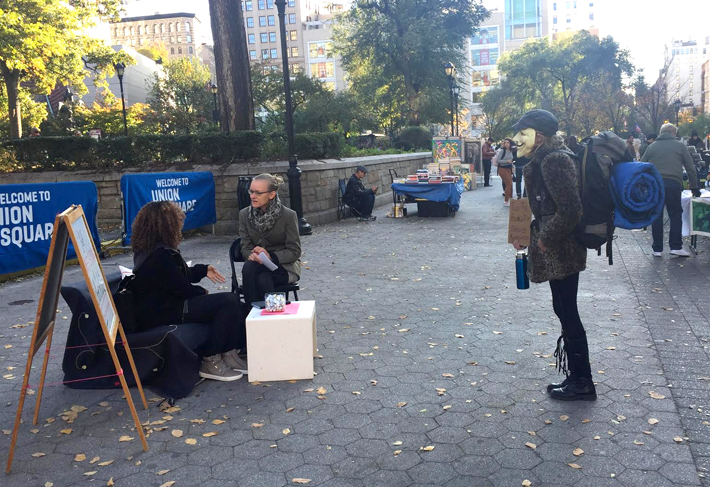
Finally, we used the insights from our prototype to refine our concept in the form of the Presidential Dessert Roundtable – creating “shared vulnerability” between politicians and the public.
Download the entire concept (including a script of the beginning of a potential show) here.

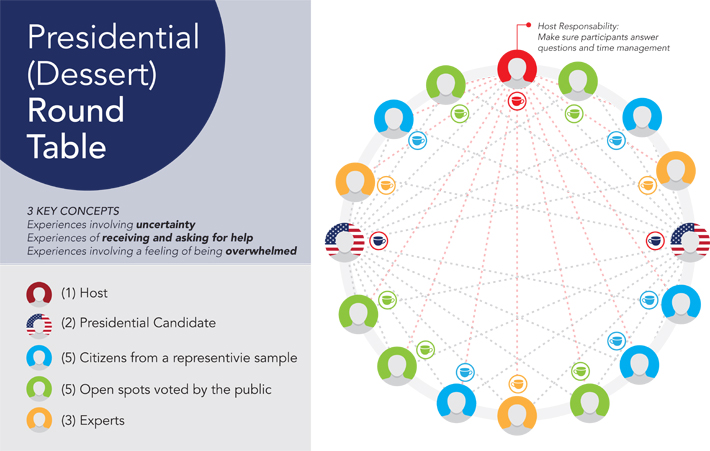
For additional descriptions of our work during the semester, you can also download my fellow Trans D student Emma´s toolkit book here.
